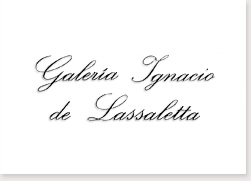
Artists are human beings who see more than the common mortal and who, above all, question themselves about the meaning of things and the reason – or lack of – for our existence in the world. Waltraud Maczassek reflects upon the infinitely small and the infinitely large, a subject that also concerned many 20th century artists. This included great artists such as Malevich, Kandinsky and Miró. Discoveries in physics actually made it possible to see cells, providing us with immensely beautiful images, while elsewhere people were investigating outer space and dreaming of travelling between the planets. Waltraud, fascinated by books about medicine just as Kandinsky was enthralled by embryology treatises, perceives and represents the similarities between some planetary forms and certain cell images, which are circular in appearance with small "craters" within.
Joining these macro and microcosms are wonderfully northern, dark, romantic landscapes: bathed in moonlight, we touch a matter that recalls the birth of the universe, the origin of all things, or which evokes the earth soaked in water, winter and its fog. Both Munch and Tàpies spring to mind: the northern tradition.
Victoria Combalía Dexeus
Art critic